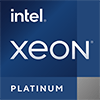
AMD EPYC 9654 Benchmark, Test and specs
Last updated:
The AMD EPYC 9654 has 96 cores with 192 threads and is based on the 4. gen of the AMD EPYC series. The processor uses a mainboard with the SP5 socket and was released in Q4/2022. The AMD EPYC 9654 scores 1,529 points in the Geekbench 5 single-core benchmark. In the Geekbench 5 multi-core benchmark, the result is 79,486 points.
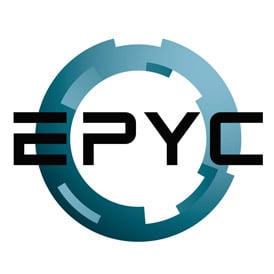
| Name: | AMD EPYC 9654 |
|---|---|
| Family: | AMD EPYC (129) |
| CPU group: | AMD EPYC 9004 (21) |
| Architecture: | Genoa / Genoa-X (Zen 4) |
| Segment: | Desktop / Server |
| Generation: | 4 |
| Predecessor: | -- |
| Successor: | -- |
CPU Cores and Base Frequency
The AMD EPYC 9654 has 96 CPU cores and can calculate 192 threads in parallel. The clock frequency of the AMD EPYC 9654 is 2.40 GHz (3.70 GHz). The number of CPU cores greatly affects the speed of the processor and is an important performance indicator.
| CPU Cores / Threads: | 96 / 192 |
|---|---|
| Core architecture: | normal |
| Cores: | 96x Zen 4 |
| Hyperthreading / SMT: | Yes |
|---|---|
| Overclocking: | No |
| Frequency: | 2.40 GHz |
| Turbo Frequency (1 Core): | 3.70 GHz |
| Turbo Frequency (96 Cores): | 3.55 GHz |
Memory & PCIeThe processor can use up to 6144 GB memory in 12 memory channels. The maximum memory bandwidth is 460.8 GB/s. The memory type as well as the amount of memory can greatly affect the speed of the system. |
|
| Memory type: | Memory bandwidth: |
|---|---|
| DDR5-4800 | 460.8 GB/s |
| Max. Memory: | 6144 GB |
| Memory channels: | 12 |
| ECC: | Yes |
| PCIe: | 5.0 x 128 |
| PCIe Bandwidth: | 504.1 GB/s |
Thermal ManagementThe thermal design power (TDP for short) of the processor is 360 W. The TDP specifies the necessary cooling solution that is required to cool the processor sufficiently. The TDP usually gives a rough idea of the actual power consumption of the CPU. |
|
|---|---|
| TDP (PL1 / PBP): | 360 W |
| TDP (PL2): | -- |
| TDP up: | 400 W |
| TDP down: | 320 W |
| Tjunction max.: | 100 °C |
Technical details
The AMD EPYC 9654 is made in 5 nm. The smaller the manufacturing process of a CPU, the more modern and energy-efficient it is. Overall, the processor has 480.00 MB cache. A large cache can greatly speed up the processor's speed in some cases such as games.
| Technology: | 5 nm |
|---|---|
| Chip design: | Chiplet |
| Socket: | SP5 |
| L2-Cache: | 96.00 MB |
| L3-Cache: | 384.00 MB |
| AES-NI: | Yes |
| Operating systems: | Windows Server 2022, Linux, Windows 11 |
| Virtualization: | AMD-V, SVM |
|---|---|
| Instruction set (ISA): | x86-64 (64 bit) |
| ISA extensions: | SSE4.2, AVX2, AVX-512, BFLOAT16, VNNI |
| Release date: | Q4/2022 |
| Release price: | 11805 $ |
| Part Number: | 100-000000789 |
| Documents: | Technical data sheet |
Rate this processor
Benchmark results

The benchmark results for the AMD EPYC 9654 have been carefully checked by us. We only publish benchmark results that have been created by us or that have been submitted by a visitor and then checked by a team member. All results are based on and fullfill our benchmark guidelines.
Geekbench 5, 64bit (Single-Core)
Geekbench 5 is a cross plattform benchmark that heavily uses the systems memory. A fast memory will push the result a lot. The single-core test only uses one CPU core, the amount of cores or hyperthreading ability doesn't count.

|
AMD Ryzen 5 5600
6C 12T @ 4.40 GHz |
||

|
AMD Ryzen 5 5600X3D
6C 12T @ 4.40 GHz |
||

|
MediaTek Dimensity 9200+
8C 8T @ 3.35 GHz |
||
|
|
AMD EPYC 9654
96C 192T @ 3.70 GHz |
||
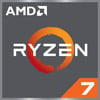
|
AMD Ryzen 7 7736U
8C 16T @ 4.70 GHz |
||

|
AMD Ryzen 7 7735U
8C 16T @ 4.75 GHz |
||

|
AMD EPYC 9654P
96C 192T @ 3.70 GHz |
||
Geekbench 5, 64bit (Multi-Core)
Geekbench 5 is a cross plattform benchmark that heavily uses the systems memory. A fast memory will push the result a lot. The multi-core test involves all CPU cores and taks a big advantage of hyperthreading.
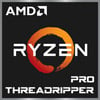
|
AMD Ryzen Threadripper PRO 7995WX
96C 192T @ 2.50 GHz |
||
|
|
AMD EPYC 9654
96C 192T @ 3.55 GHz |
||

|
AMD EPYC 9654P
96C 192T @ 3.55 GHz |
||

|
AMD EPYC 9554
64C 128T @ 3.75 GHz |
||
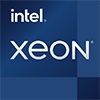
|
Intel Xeon w9-3495X
56C 112T @ 2.90 GHz |
||
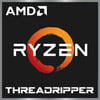
|
AMD Ryzen Threadripper 7980X
64C 128T @ 3.20 GHz |
||

|
AMD EPYC 7713
64C 128T @ 3.00 GHz |
||
Geekbench 6 (Single-Core)
Geekbench 6 is a benchmark for modern computers, notebooks and smartphones. What is new is an optimized utilization of newer CPU architectures, e.g. based on the big.LITTLE concept and combining CPU cores of different sizes. The single-core benchmark only evaluates the performance of the fastest CPU core, the number of CPU cores in a processor is irrelevant here.
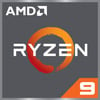
|
AMD Ryzen 9 6900HS
8C 16T @ 4.60 GHz |
||
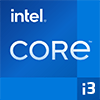
|
Intel Core i3-1210U
6C 8T @ 4.40 GHz |
||
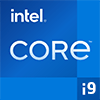
|
Intel Core i9-11900H
8C 16T @ 4.90 GHz |
||
|
|
AMD EPYC 9654
96C 192T @ 3.70 GHz |
||

|
AMD EPYC 9654P
96C 192T @ 3.70 GHz |
||

|
AMD Ryzen 5 5500GT
6C 12T @ 4.40 GHz |
||

|
AMD Ryzen 7 7735HS
8C 16T @ 4.75 GHz |
||
Geekbench 6 (Multi-Core)
Geekbench 6 is a benchmark for modern computers, notebooks and smartphones. What is new is an optimized utilization of newer CPU architectures, e.g. based on the big.LITTLE concept and combining CPU cores of different sizes. The multi-core benchmark evaluates the performance of all of the processor's CPU cores. Virtual thread improvements such as AMD SMT or Intel's Hyper-Threading have a positive impact on the benchmark result.

|
AMD EPYC 9554
64C 128T @ 3.75 GHz |
||

|
Intel Core i9-14900KS
24C 32T @ 5.90 GHz |
||

|
AMD Ryzen Threadripper PRO 7965WX
24C 48T @ 4.20 GHz |
||
|
|
AMD EPYC 9654
96C 192T @ 3.55 GHz |
||

|
AMD EPYC 9654P
96C 192T @ 3.55 GHz |
||

|
Intel Core i9-14900KF
24C 32T @ 5.70 GHz |
||

|
Intel Core i9-14900K
24C 32T @ 5.70 GHz |
||
Estimated results for PassMark CPU Mark
Some of the CPUs listed below have been benchmarked by CPU-monkey. However the majority of CPUs have not been tested and the results have been estimated by a CPU-monkey’s secret proprietary formula. As such they do not accurately reflect the actual Passmark CPU mark values and are not endorsed by PassMark Software Pty Ltd.

|
AMD Ryzen Threadripper PRO 7995WX
96C 192T @ 2.50 GHz |
||

|
AMD Ryzen Threadripper PRO 7985WX
64C 128T @ 3.20 GHz |
||
|
|
AMD EPYC 9654
96C 192T @ 3.55 GHz |
||

|
AMD EPYC 9654P
96C 192T @ 3.55 GHz |
||

|
AMD Ryzen Threadripper PRO 7975WX
32C 64T @ 4.00 GHz |
||

|
AMD EPYC 9374F
32C 64T @ 4.10 GHz |
||

|
Intel Xeon w9-3495X
56C 112T @ 2.90 GHz |
||
Benchmarks

Geekbench 5 (SC)
2,488 entries
2,488 entries

Geekbench 5 (MC)
2,461 entries
2,461 entries

Geekbench 6 (SC)
1,755 entries
1,755 entries

Geekbench 6 (MC)
1,703 entries
1,703 entries

PassMark CPU-Mark
2,392 entries
2,392 entries

V-Ray CPU-Render
249 entries
249 entries
Description of the processor
The AMD EPYC 9654 comes from the fourth generation of the AMD EPYC family. The processor was released by AMD in the fourth quarter of 2022. Already the official introductory price, which is 11805 US dollars, shows that the AMD EPYC 9654 is a processor for professional use. The AMD EPYC 9654 is used in high-performance servers and can be operated with both Windows and Linux-based operating systems.The AMD EPYC 9654 is based on the Genoa (Zen 4) architecture and is manufactured with a structure width of 5 nanometers. It has a 96.00 megabyte level 2 cache and a 384.00 megabyte level 3 cache. The 64-bit processor supports the following ISA extensions: SSE4.2, AVX2, AVX-512, BFLOAT16, VNNI.
The processor is based on a standard core architecture with 96 physical cores and since the processor supports hyperthreading, the processor has a total of 192 computing threads at its disposal. The base clock of the 96 cores of the AMD EPYC 9654 is 2.40 gigahertz. In turbo mode, the processor can increase the clock rate to up to 3.70 gigahertz, but only when a single core is loaded. If all cores are loaded in parallel, the clock frequency is not much lower at 3.55 gigahertz.
An internal graphics unit is not integrated in the processor, since this is not required in the professional server area.
The AMD EPYC 9654 has a total of 12 memory channels over which a maximum bandwidth of 461 GB/s can be achieved. The processor can be equipped with up to 6144 gigabytes of RAM. It only supports DDR5 memory and the officially supported memory type is DDR5-4800. Memory with automatic error correction is of course also supported.
Popular comparisons
back to index



